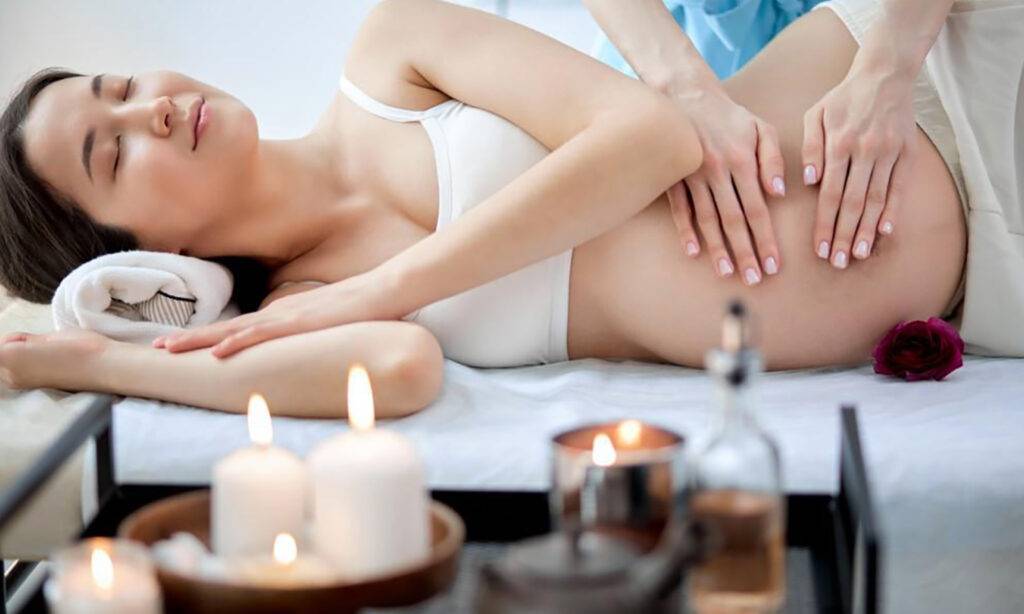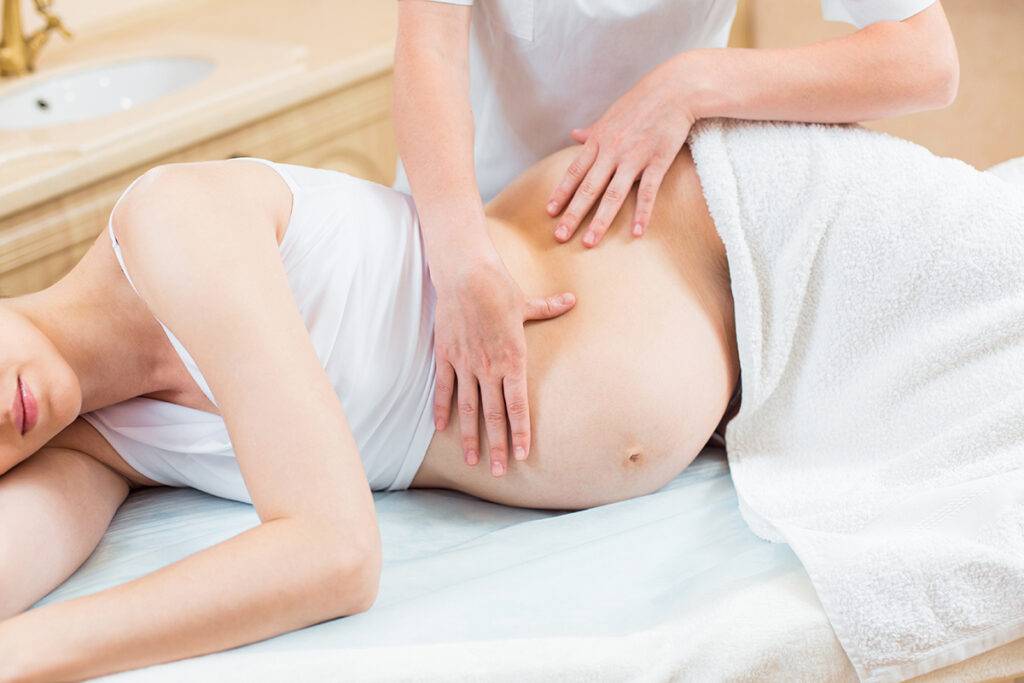Pregnancy is a wondrous journey, but it can also come with its fair share of aches and pains.
From backaches and swollen feet to stress and anxiety, many expectant mothers seek relief through massage therapy.
But with so many options available, the question arises: should you opt for an ordinary massage or a specialized pregnancy massage?
Here’s a breakdown of the key differences to help you make an informed decision:

Positioning:
- Ordinary Massage: You’ll typically lie face down, face up, or on your side on a massage table.
- Pregnancy Massage: The therapist uses specially designed pillows and wedges to support your growing belly and ensure both you and your baby are comfortable.
Side-lying is the most common position, but adjustments are made throughoutthe massage based on your needs and trimester.

Techniques:
- Ordinary Massage: The therapist might use a variety of techniques depending on your desired outcome, such as deep tissue massage for muscle knots or Swedish massage for relaxation.
- Pregnancy Massage: The focus is on gentle, soothing strokes that avoid pressure points on your abdomen and specific areas like the lower back and sacrum.
Techniques are adapted to address common pregnancy discomforts like sciatica, swollen feet, and headaches.
Pressure:
- Ordinary Massage: Pressure can vary depending on your preference and the type of massage chosen. Deep tissue massage uses firmer pressure, while Swedish massage is lighter.
- Pregnancy Massage: Lighter pressure is always used, even in areas that typically receive deeper pressure in a regular massage. This ensures the safety and comfort of both you and your baby.
Therapist Expertise:
- Ordinary Massage: Most massage therapists are qualified to perform general massages.
- Pregnancy Massage: Look for a therapist certified in prenatal massage. They have specialized training in anatomy and physiology specific to pregnancy, ensuring they understand the unique needs and potential risks involved.

Benefits:
- Ordinary Massage: This can help with relaxation, stress relief, muscle tension, pain management, and improved circulation.
- Pregnancy Massage: Offers the same benefits as an ordinary massage, but also targets pregnancy-specific discomforts like back pain, leg cramps, swelling, and insomnia. It can also promote emotional well-being and reduce anxiety.
Considerations:
- Ordinary Massage: Not recommended during pregnancy due to the risk of applying pressure to certain areas and potential discomfort lying on your stomach.
- Pregnancy Massage: Generally safe when performed by a certified therapist, but always communicate any concerns or pre-existing health conditions beforehand.
Remember, consulting your doctor before getting any massage during pregnancy is crucial.
They can advise you on what’s safe and recommend qualified therapists in your area.
So, the next time you’re seeking relief from pregnancy aches and pains, remember: a pregnancy massage offers a safe and specialized approach.

